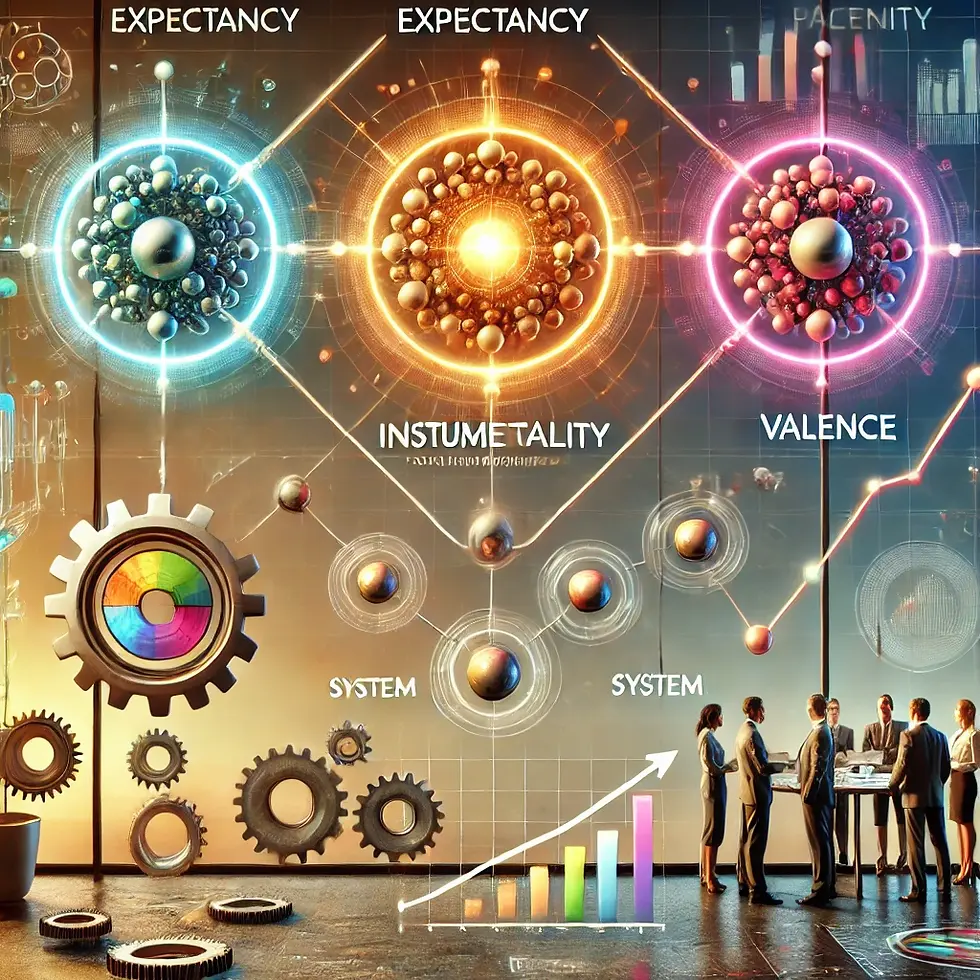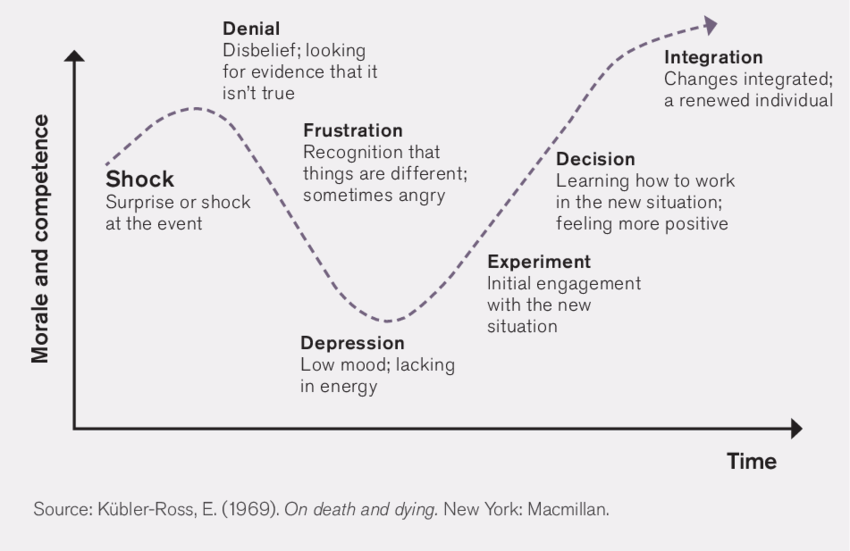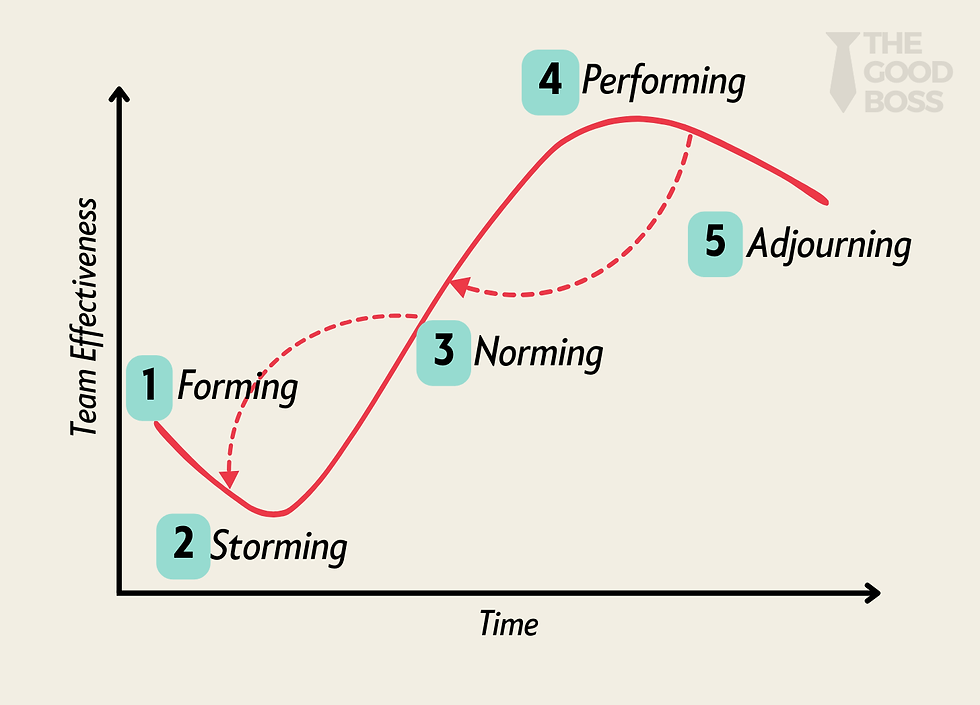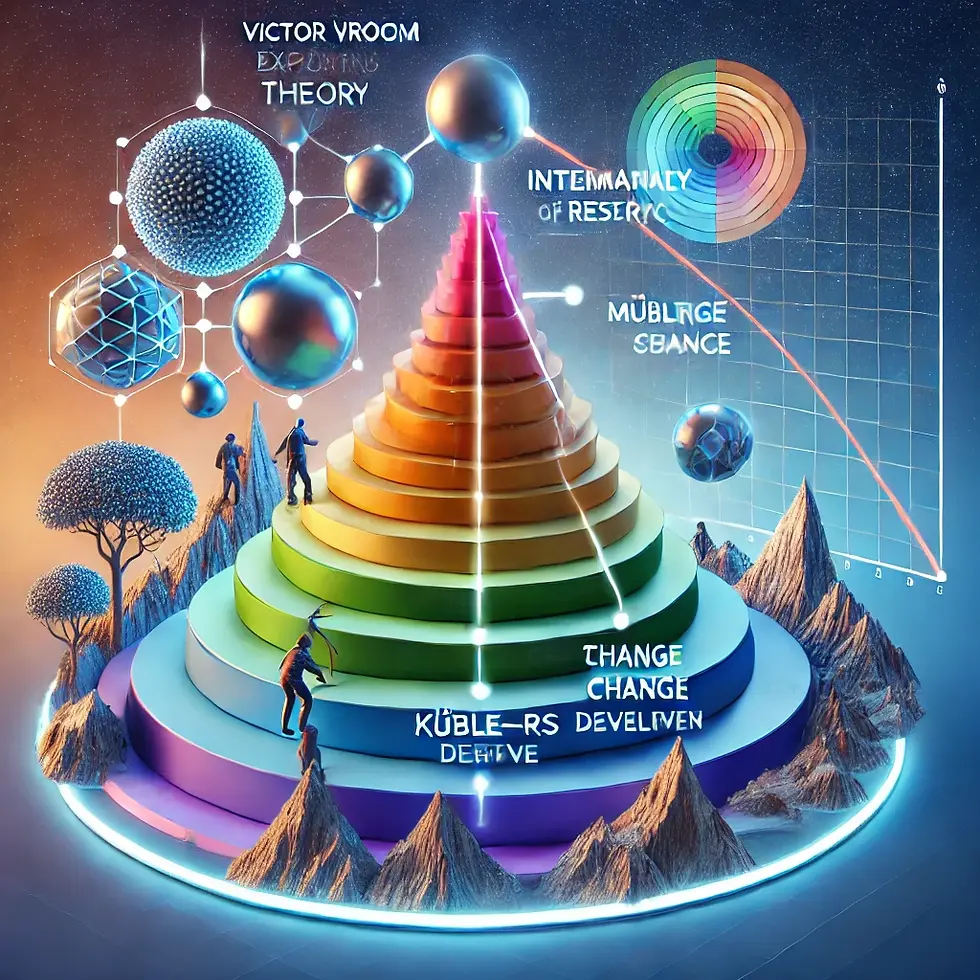Victor Vroom’s Expectancy Theory in Organizational Change: A Framework for Overcoming Resistance
- Mzukisi Qunta
- Nov 26, 2024
- 8 min read
Updated: Dec 2, 2024
Organizations undergoing change often face resistance from employees at all levels. Whether the transformation involves adopting new technology, restructuring workflows, or redefining the company’s mission, resistance is an inherent part of the process. To navigate these challenges, Victor Vroom's Expectancy Theory provides a practical framework for understanding and addressing resistance by focusing on motivation. This theory, when combined with models like the Tuckman Model of Team Development, creates a robust approach to facilitating change.

Understanding Victor Vroom’s Expectancy Theory
Victor Vroom's Expectancy Theory of Motivation (1964) is a foundational concept in organizational behavior. It explains how individuals decide to act in a certain way based on their expectations of outcomes. The theory revolves around three core elements:

Expectancy: The belief that effort will lead to a desired level of performance.
Example: Employees will adopt a new BIM tool if they believe training will help them use it effectively.
Instrumentality: The belief that achieving the desired performance will result in specific outcomes or rewards.
Example: Employees might embrace a sustainable construction initiative if they believe their contributions will be recognized.
Valence: The value an individual places on the rewards or outcomes.
Example: Employees are more motivated when the reward (e.g., financial bonus or career growth) aligns with their personal goals.
Formula:

If any of these factors is low or absent, motivation suffers, and resistance is more likely.
Resistance to Change: Integrating Maurer’s Levels and the Kübler-Ross Curve
Resistance to change is a common challenge that intersects with Vroom’s theory. Rick Maurer’s 3 Levels of Resistance (1996) and the Kübler-Ross Change Curve (1969) provide insights into the emotional and psychological barriers that employees face during organizational change.
Maurer’s Levels of Resistance
Level 1: Lack of Information:
- Employees resist because they lack knowledge or misunderstand the change.
- Solution: Vroom’s Expectancy factor can address this by ensuring employees understand how their efforts (training, adopting new practices) will lead to successful outcomes.
Level 2: Emotional Resistance:
- Fear of the unknown or distrust in leadership creates opposition.
- Solution: Leaders must demonstrate Instrumentality, proving that employee efforts will lead to tangible rewards or security.
Level 3: Deep-Rooted Resistance:
- Resistance stems from deeply held values or cultural norms.
- Solution: Aligning rewards (Valence) with personal and organizational values can shift perspectives over time.
Kübler-Ross Change Curve
The Kübler-Ross Curve, originally designed for grief, applies to organizational change, where employees experience similar emotional transitions:

Shock and Denial: Initial resistance aligns with low Expectancy. Employees doubt their ability to succeed in the new system.
Anger and Depression: Emotional resistance emerges, reflecting skepticism about Instrumentality and perceived lack of value (Valence).
Acceptance and Commitment: Employees start to embrace the change once they see the value of their contributions and the rewards.
Vroom’s Expectancy Theory complements these stages by providing targeted strategies to overcome resistance.
Tuckman’s Model: Building Team Cohesion During Change
The Tuckman Model (1965) outlines the stages of team development—Forming, Storming, Norming, Performing, and Adjourning—and aligns with both Vroom’s theory and resistance frameworks to facilitate smoother transitions.

Stages of Team Development
Forming: Teams are unsure of their roles and may show Level 1 resistance. Leaders should focus on Expectancy, ensuring that employees understand how their efforts will lead to success.
Storming: Conflicts arise, often due to emotional resistance. Highlighting Instrumentality through small wins can rebuild trust.
Norming: Teams begin to work cohesively, as Valence becomes apparent—rewards and outcomes align with team goals.
Performing: Motivation is at its peak, with high alignment across Expectancy, Instrumentality, and Valence.
Adjourning: As projects end, leaders must ensure the transition out of roles is smooth and rewarding.
Real-World Application: Case Studies
Case Study 1: Tesla’s Transformation of Manufacturing
Tesla faced significant resistance when automating its manufacturing lines. Workers doubted their ability to adapt to advanced robotics (low Expectancy) and feared job loss (low Valence).
Solution: Tesla invested in comprehensive training programs, linking effort to performance (Expectancy) and performance to career growth opportunities (Instrumentality). Employees eventually embraced automation, contributing to Tesla’s record-breaking production output.
Case Study 2: AECOM’s Digital Transformation
AECOM, a global engineering consultancy, struggled with resistance to adopting BIM workflows, particularly among senior engineers.
Solution: Leadership used Vroom’s framework to demonstrate that learning BIM would lead to improved project outcomes (Instrumentality) and career advancement (Valence). Pilot projects showcased measurable success, increasing confidence and motivation across teams.
Case Study 3: Dubai Expo 2020
The construction of Dubai Expo 2020 required the integration of innovative technologies. Contractors resisted due to a lack of technical expertise (low Expectancy) and concerns over profitability (low Valence).
Solution: Leaders emphasized the economic and reputational rewards (Valence) of participating in a globally significant project, while also providing hands-on support to bridge technical gaps (Expectancy). The result was a successful delivery on schedule.
Combining Models for Lasting Change
The synergy between Vroom’s Expectancy Theory, Maurer’s Resistance Levels, the Kübler-Ross Curve, and Tuckman’s Model provides a comprehensive roadmap for organizational change:

Stages of Team Development
Forming: Teams are unsure of their roles and may show Level 1 resistance. Leaders should focus on Expectancy, ensuring that employees understand how their efforts will lead to success.
Storming: Conflicts arise, often due to emotional resistance. Highlighting Instrumentality through small wins can rebuild trust.
Norming: Teams begin to work cohesively, as Valence becomes apparent—rewards and outcomes align with team goals.
Performing: Motivation is at its peak, with high alignment across Expectancy, Instrumentality, and Valence.
Adjourning: As projects end, leaders must ensure the transition out of roles is smooth and rewarding.
Real-World Application: Case Studies
Case Study 1: Tesla’s Transformation of Manufacturing
Tesla faced significant resistance when automating its manufacturing lines. Workers doubted their ability to adapt to advanced robotics (low Expectancy) and feared job loss (low Valence).
Solution: Tesla invested in comprehensive training programs, linking effort to performance (Expectancy) and performance to career growth opportunities (Instrumentality). Employees eventually embraced automation, contributing to Tesla’s record-breaking production output.
Case Study 2: AECOM’s Digital Transformation
AECOM, a global engineering consultancy, struggled with resistance to adopting BIM workflows, particularly among senior engineers.
Solution: Leadership used Vroom’s framework to demonstrate that learning BIM would lead to improved project outcomes (Instrumentality) and career advancement (Valence). Pilot projects showcased measurable success, increasing confidence and motivation across teams.
Case Study 3: Dubai Expo 2020
The construction of Dubai Expo 2020 required the integration of innovative technologies. Contractors resisted due to a lack of technical expertise (low Expectancy) and concerns over profitability (low Valence).
Solution: Leaders emphasized the economic and reputational rewards (Valence) of participating in a globally significant project, while also providing hands-on support to bridge technical gaps (Expectancy). The result was a successful delivery on schedule.
Combining Models for Lasting Change
The synergy between Vroom’s Expectancy Theory, Maurer’s Resistance Levels, the Kübler-Ross Curve, and Tuckman’s Model provides a comprehensive roadmap for organizational change:
Address Expectancy:
Use training, communication, and pilot projects to ensure employees believe their efforts will lead to success.
Demonstrate Instrumentality:
Create clear pathways showing how performance leads to tangible rewards.
Enhance Valence:
Align rewards with individual and team values, emphasizing career growth, recognition, and financial incentives.
Manage Resistance:
Address emotional and deep-rooted concerns through transparency, empathy, and alignment with shared values.
Foster Team Dynamics:
Apply Tuckman’s stages to build trust and cohesion, ensuring that teams move seamlessly from conflict to collaboration.
Conclusion: Building a Unified Framework for Managing Change
Organizational change is an intricate process, often marked by varying degrees of resistance and fluctuating employee motivation. To navigate these complexities, it is crucial to adopt a multidimensional approach that integrates theories of motivation, resistance, and team dynamics. Victor Vroom’s Expectancy Theory provides a foundation for understanding what drives individual and collective effort, but its impact is magnified when aligned with complementary frameworks such as Maurer’s Levels of Resistance, the Kübler-Ross Change Curve, and the Tuckman Model of Team Development.
The Expectancy Theory emphasizes the importance of aligning three key factors—Expectancy, Instrumentality, and Valence—to sustain motivation. However, its application becomes even more effective when paired with the insights provided by Maurer’s framework for addressing resistance and the Kübler-Ross Curve’s exploration of emotional transitions. For instance, when employees are entrenched in emotional resistance (Level 2 resistance in Maurer’s model) or the anger and depression stages of the Kübler-Ross Curve, focusing on building trust and demonstrating clear, valuable outcomes (Valence) can shift perceptions and re-engage individuals in the change process.
Meanwhile, the Tuckman Model highlights the dynamic, evolving nature of team collaboration during change. From the Forming stage, where employees are uncertain and may exhibit initial resistance, to the Performing stage, where collective effort leads to high-impact results, Tuckman’s stages underscore the importance of patience, communication, and adaptability. When combined with Vroom’s framework, leaders gain a roadmap not only for motivating individuals but also for cultivating resilient, high-performing teams.
Implications for Practice
This interconnected framework underscores the importance of customized interventions. Each organization faces unique challenges based on its culture, goals, and the nature of the change.
By using these models, leaders can:
Diagnose Resistance: Understand whether resistance stems from informational gaps, emotional reactions, or deeper systemic issues.
Target Motivation: Develop strategies tailored to individual needs, ensuring that employees see the connection between their efforts and the benefits of change.
Build Trust and Cohesion: Foster a culture of collaboration and mutual support through transparent communication and recognition of contributions.
The Role of Leadership
Leadership is the linchpin in successfully implementing this framework. Leaders must act as both strategists and empathetic guides, demonstrating a clear vision for the change while addressing individual and collective concerns. For instance, Tesla’s leadership successfully overcame resistance to automation by not only showcasing the tangible benefits of change but also providing robust training programs that addressed employee fears and enhanced their sense of capability.
Looking Forward
As organizations face increasingly complex and rapid transformations, the ability to adapt quickly while maintaining employee engagement will become a defining factor of success. Integrating these theories provides a comprehensive toolkit for addressing resistance, fostering motivation, and building cohesive teams. Moreover, real-world examples like AECOM’s adoption of BIM workflows and the construction of Dubai Expo 2020 highlight that the challenges of resistance are not insurmountable. When addressed with a thoughtful, evidence-based approach, organizations can turn resistance into resilience, unlocking the full potential of their teams.
A Call to Action
For organizations currently struggling with change, the first step is to assess the state of motivation, resistance, and team dynamics using these frameworks. Ask: Do employees see a clear path from effort to success (Expectancy)? Are the outcomes they value aligned with the rewards being offered (Valence)? Are team dynamics supportive or strained? These questions provide the foundation for crafting a strategic response to resistance and unlocking the full potential of organizational change.
In a world where change is constant, mastering the art and science of managing resistance and fostering motivation is no longer optional—it is a necessity. By leveraging Vroom’s Expectancy Theory, Maurer’s Resistance Levels, the Kübler-Ross Curve, and Tuckman’s Model, leaders can create organizations that thrive in transformation, ensuring not just survival but sustained growth and innovation.
Next, we explore PESO model as a strategic model for marketing
References
Beer, M., & Nohria, N. (2000). Cracking the code of change. Harvard Business Review, 78(3), 133-141.
Hersey, P., & Blanchard, K. H. (1977). Management of organizational behavior: Utilizing human resources. Englewood Cliffs, NJ: Prentice Hall.
Kotter, J. P. (1996). Leading change. Boston, MA: Harvard Business School Press.
Kübler-Ross, E. (1969). On death and dying. New York, NY: Macmillan.
Maurer, R. (1996). Beyond the wall of resistance: Unconventional strategies that build support for change. Austin, TX: Bard Press.
Tuckman, B. W., & Jensen, M. A. C. (1977). Stages of small-group development revisited. Group & Organization Studies, 2(4), 419-427.
Vroom, V. H. (1964). Work and motivation. New York, NY: John Wiley & Sons.
Yukl, G. A. (2010). Leadership in organizations (7th ed.). Upper Saddle River, NJ: Pearson Education.




Comments